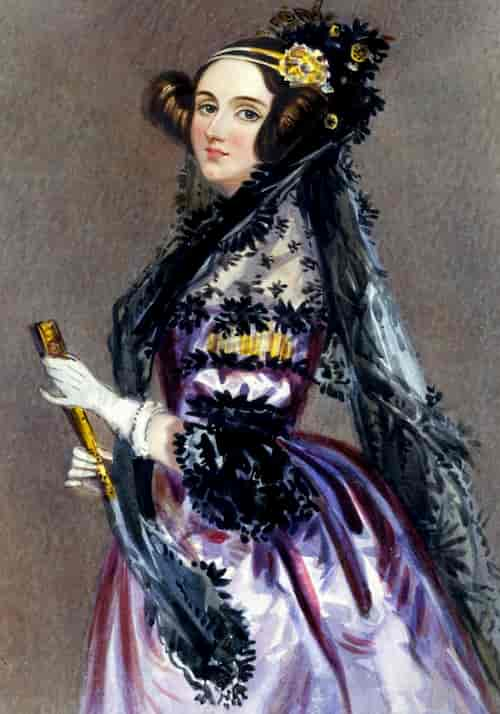It's no secret the IT industry has a gender problem.
Given the current ratio of male and female employees, most of them are male giving the illusion that programming is primarily a male occupation.
But is that right, are women unable to succeed at learning to code? There is no scientific correlation between gender and one's ability to learn programming. Historically, many of the first pioneers in the field were female, it wasn't until later that the gender bias emerged. Today, companies are trying to address this gender bias and actively encourage women to take up the abundant opportunities available to them in the IT industry.
There's a prevailing belief that "Programming requires logical thinking, and women are obviously better at emotional thinking." In 2017, James Damore, a former engineer at Google lost his job for criticizing the company's diversity program, arguing that "innate personality differences" lead women to lose out to men.
However, the research on gender and logical thinking is sketchy and in many cases, women outperform men at logical thinking.
Neuroscientist Daphna Joel and her team examined the brains of 1,400 individuals (far from the usual neuro-imaging studies that contain about a handful of men and women).
Although they found that some minor sections of the brain show patterns that could be defined as more male or more female, overall, millions of sections show no difference at all.
They found that just 3% of people have a brain that is fully male or fully female. The brain, when looked at as a whole, is made up of a mosaic of male and female sections.
Nearly all of us are on a sort of spectrum with brains that are not totally one or the other.
If we want to continue the stereotypical line of men being better logical thinkers, are women not then more patient and detail-oriented? Both of which are two excellent prerequisites for being a successful programmer.
Now, putting perceived character differentiations aside, how did we get to where are today?
Looking back in time
Few know that the honor of writing the first computer code belongs to a woman named Ada Lovelace, the daughter of poet Lord Byron.

"Ada LoveLock", By Alfred Edward Chalon, licensed under Public Domain Mark 1.0
Ada Lovelace was a friend and correspondent to the British mathematician Charles Babbage, who, in 1834, devised a precursor to the modern computer, a machine he called the Analytical Engine.

"Babbage's Analytical Engine" licensed under Attribution-ShareAlike 2.0 Generic (CC BY-SA 2.0)
Although never completed, the Analytical Machine was designed to perform high-level equations. Ada Lovelace understood it's potential to do much more than manipulate numbers. She speculated that if any sort of data could be represented by a set of numbers, that data could then be changed to represent something else by adjusting the number sequence.
Ada Lovelace notes on the subject are widely regarded as the first computer program.
Where Babbage had devised the hardware, Lovelace had mastered its programmatic potential and interestingly, as the field developed, this sort of division of expertise between the sexes remained.
In 1943, an all-male research team at the University of Pennsylvania began developing the first general-purpose digital computer, ENIAC (Electronic Numerical Integrator and Computer).
When it came to hiring programmers, they chose six people, all of whom were women. The men developed the machines, and the women programmed them.
One of ENIAC's developers would later recall that "We didn't think we should spend time worrying about programming methods, there's plenty of time to worry about these things later."
The onus fell on women to think about these questions, and this original team of women made many iconic contributions. Although this original team of six received little acknowledgement or acclaim, they had quite literally helped to pioneer the field of computer programming.
Early male managers at the time saw programming as a sort of well-respected clerical role most suitable for women.
For example, in 1963, a female editor for computer magazine Datamation, noted that managers had found that "women have greater patience than men and are better at details, two prerequisites for the allegedly successful programmer." What's more, the article claims that "women in the workplace are less aggressive and more insightful."
Even the fashion magazine Cosmopolitan endorsed programming as a career for ambitious women in a 1968 article titled 'The Computer Girls' which lauded the lack of gender discrimination in computing because employers actually preferred female employees. One must note, however, that it then suggests that female programmers find it easer to get dates because the industry was "overrun with males."
Dr. Grace Hopper, a prominent Computer Scientist of the era, told a reporter that programming was "just like planning a dinner. You have to plan ahead and schedule everything so that it's ready when you need it... Women are 'naturals' at computer programming." In the same article, James Adams, the director of education for the Association for Computing Machinery is quoted as saying, "I don’t know of any other field, outside of teaching, where there's as much opportunity for a woman."
How did the bias towards men in IT emerge?
As software development grew in importance, men with scientific backgrounds in physics, mathematics and electrical engineering moved into the new field.
As these disciplines were already male dominated at the time, they began to inflict their new subject of interest with the same characteristics.
As the historian Nathan Ensmenger puts it, “An activity originally intended to be performed by low-status, clerical – and more often than not, female – computer programming was gradually and deliberately transformed into a high-status, scientific, and masculine discipline.”
The stereotype of the predominantly male programmer had began to take shape.
By the mid-1960s, this was reenforced by the growing influence of associations such as the American Computer Society (ACM).
The ACM is an organization, which till this day, attempts to provide a professional framework to software development and set industry standards for companies to follow.
The positions of leadership at the ACM were particularly biased in favor of men.
Certain barriers to entry in the field were established such as the requirement for advanced degrees, which put women at a significant disadvantage at a time where less women were going to college.
Coding was no longer a clerical deskjob for ex-typewriters, but fundamental for the future and, unfortunately, important enough to be viewed upon as mainly the business of men.
Further to the requirement of degrees, companies introduced more stringent recruitment procedures examining management skills and personality where perceived masculine traits were favored regardless of technical ability.
A self-fulfilled reality

In the 1960s, two psychologists conducted research to try to define the personality traits of male computer programmers. [1]
As well the predictable love of solving puzzles, the other distinguishing feature they found was the men was "their lack of interest in people".
A largely ignored subsequent study also found that female programmers had the some of same traits.
But the stereotype of the male computer programmer as a closed and eccentric caught the public imagination.
In 1968, the analyst Richard Brandon told the Annual meeting of the American Computer Society that the typical programmer was "excessively independent . . . often egocentric, slightly neurotic, and he borders upon a limited schizophrenia. The incidence of beards, sandals, and other symptoms of rugged individualism or nonconformity are notably greater among this demographic group."[1]
To some extent, the creation of such charicatures became a self-fulfilling prophecy and over time, people began to think that the best programmers should be different, a bit socially awkward but most importantly male.
This is exemplified by an IBM advertisement ran in 1969 which asked programmers if they had what it takes to program. What stood out on the advert was the headline "Are YOU the man to command electronic giants?".
The bias just sorta stuck and, most ironically, it did so in spite of the history of computing. Women once led the way on programming, only to be left out once men had found the field sufficiently important.
One final note
If you’re a female interested in taking up coding, I hope I’ve given enough reasons to assure you that the field is equally accessible to you, providing you’ve the interest and enthusiasm.
Many companies now have programs to address their gender balances, so arguably it’s never been a better time to join us.
References
[1] https://books.google.fr/books?id=VCcsTPQ738oC&q=infinitum&redir_esc=y#v=snippet&q=infinitum&f=false